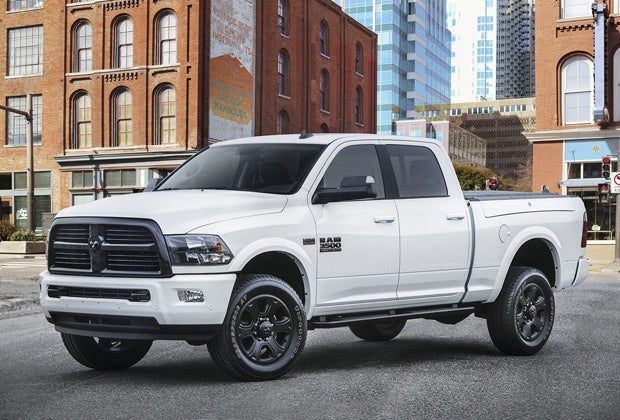Consumers Union, an American non-profit organization focused on product testing, is calling for public disclosure of fuel economy estimates for heavy-duty (HD) pickup trucks.
If you’ve ever shopped for an HD pickup, you’ve noticed it: the truck’s Monroney will display N/A in the boxes allocated for its rated fuel economy. This is because, thanks to the varying way in which large pickups are used for towing and hauling, manufacturers are not required to display any mpg rating on these machines.
A traditional view is that thanks to the wide array of jobs foisted upon these hardworking pickups – towing trailers, hauling heavy payload, or stuffed with six burly workers – any sort of attempt by the EPA to gauge fuel economy would be incorrect, given that there is great variance in how people use their heavy duty trucks.
READ MORE: Ram Diesel Owners Suing FCA, Cummins Over Inflated Fuel Economy
The EPA does, however, enforce emission standards for these same trucks, compensating for the difference in usage when compared to passenger vehicles by including a ‘work factor’ to simulate a payload. The government agency, you will recall, has put renewed emphasis on testing manufacturer claims of emissions and fuel economy ever since VW spoiled the party with their diesel shenanigans in 2015.
Last week, Consumers Union sent a letter to House and Senate committee leaders requesting funds for the NHTSA and EPA to make fuel economy information on these vehicles available to the public.
It’s not as if the government agencies haven’t been faced with creating new ways of testing and rating fuel economy in the past. The recent proliferation of hybrid and all-electric cars forced the creation of a new measurement – MPGe – to account for the different ways in which these new technologies consume energy, allowing customers to make direct comparisons with other cars and allow informed decision-making. The same thing may soon happen with HD pickups.
Further complicating the issue, it is often difficult to tell how many heavy-duty trucks are sold in a year, given that most manufacturers lump light-duty and HD sales into the same column. Ford reports sales of its entire F-Series line as a single unit, for example. By rating the HD variants of these machines on a separate scale, it opens the door to a potential breaking out of these sales numbers. In the never-ending race for sales supremacy, you can bet manufacturers would be less than delighted with such a development.
[Source: Automotive News]

 Your Privacy Choices
Your Privacy Choices